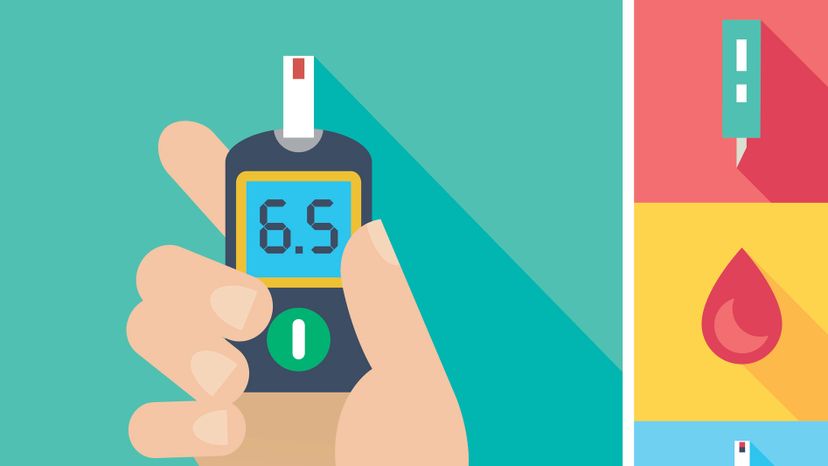 “As many as one-third of the women with Type 1 diabetes may have diabulimia. HelgaMariah/Getty Images
“As many as one-third of the women with Type 1 diabetes may have diabulimia. HelgaMariah/Getty Images
Having Type 1 diabetes (which used to be called juvenile diabetes) is a serious health problem that’s treated mostly by taking regular injections of insulin. But the disease can also trigger an eating disorder called diabetic bulimia, or "diabulimia." This involves skipping or altering insulin doses for the express purpose of losing weight. While patients often drop unwanted pounds, it’s extremely dangerous for diabetics to skip insulin, leaving them vulnerable to very serious health complications.
Diabulimia potentially affects as many as one-third of young women diagnosed with Type 1 diabetes, although men can get it too. People who have Type 1 diabetes (about 5 percent of all diabetics) are at double the risk of developing an eating disorder than those without diabetes, according to studies.
Compared with better-known eating disorders, like anorexia and bulimia, diabulimia has been more recently realized as a threat to diabetics, with its earliest appearances in medical journals in the 1980s. It still has not earned an official medical diagnosis all its own, but is recognized by most medical professionals, and is referred to as ED-DMT1, although this is more of a blanket diagnosis for a Type 1 diabetic dealing with any type of eating disorder.
Type 1 diabetics are required to maintain a fastidious diet and must also check their blood sugar levels multiple times a day. Eating disorders like diabulimia often emerge thanks to this hyper-focus on food and numbers. Diabulimia can develop on its own, but sometimes a phenomenon called "diabetes rebellion" occurs, in which a patient will be so sick and tired of managing their disease that they’ll actively ignore treatment rules. Then, the behavior snowballs into a full-blown case of diabulimia.
For people with diabetes, their pancreas isn’t able to make insulin. This is a big deal because the human body relies on insulin, a hormone, to transport glucose from the bloodstream directly to its cells. Without insulin, glucose cannot be absorbed; thus, it isn’t stored as fat or used for energy like it’s supposed to be. Instead, glucose collects in the blood and is eventually expelled from the body through urine, causing significant weight loss. Theoretically by manipulating your insulin levels — or skipping your insulin shots — you can eat anything you want and still lose weight. But this comes at a serious price.
In the short-term, poor blood glucose management can actually stunt or slow growth in adolescent patients, keeping them from reaching their full physical potential. Further, acids called ketones can build up in the blood, causing a chemical imbalance that is potentially life-threatening. Down the road, you could experience eye problems ranging from blurred vision to total blindness. The kidneys are always at risk for diabetics, and those who mismanage insulin are far more likely to wind up on dialysis in order to stay alive. Even more sobering is the fact that the mortality rate is tripled for those Type 1 diabetics who suffer from eating disorders as opposed to those who don’t.
Signs of diabulimia can be subtle. If you know someone with Type 1 diabetes and suspect an eating disorder, keep a close eye out for weight fluctuations, avoidance of doctor appointments, dodged questions about insulin or general disease management as well as high HbA1c blood levels. People with diabulimia will often exhibit signs of hyperglycemia, like being very thirsty, unusually tired, having blurred vision and needing to urinate more than is normal.
Now That’s Sad
In the U.S. alone, 30 million people suffer from eating disorders, with one person dying every 62 minutes from related complications. In fact, of any mental illness, eating disorders have the highest mortality rate.















































